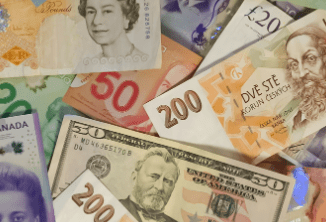ECB Cuts Interest Rates Again
The European Central Bank (ECB), which controls the euro, decided to lower its main interest rates by 25 basis points (bps), or 0.25%. This is the second time they have cut rates recently. The ECB believes that lowering interest rates will help boost the economy by making it cheaper to borrow money. Lower borrowing costs can encourage people and businesses to spend more, which can help strengthen the economy.

The rate cut was expected by many experts, so it didn’t come as a surprise. The ECB lowered the Rate on Deposit Facility to 3.5% and its Main Refinancing Operations Rate to 3.65%. The move follows a decision made in June, which kicked off this “rate-cutting cycle.” The ECB is confident that inflation (the rate at which prices rise) will fall to its target of 2% by 2025.
But why did the ECB decide to cut rates now? A big reason is the weak economic growth in Germany, which is the largest economy in the Eurozone. In the second quarter of the year, the German economy shrank by 0.1%. This decline raised fears that Germany might be heading toward a recession. Lowering rates is one way the ECB is trying to help Germany and other countries in the Eurozone recover.
No Clear Signal from the ECB Boss
Christine Lagarde, the President of the ECB, did not give any specific guidance on future rate cuts. She said that the ECB would base its future decisions on how the economy and inflation are performing. In other words, they will keep an eye on new data to decide what to do next. This approach means that we can expect more surprises from the ECB in the coming months!
The US Dollar Takes a Hit
While the euro was getting a boost, the US dollar wasn’t having such a good day. The dollar fell after the US Producer Price Index (PPI) numbers were released. The PPI is a measure of inflation from the perspective of producers – it shows how much prices are increasing at the factory level before they reach the consumer.
The latest data showed that the US PPI rose at a slower rate than expected. The annual PPI increase was 1.7%, slightly below the predicted 1.8% and much lower than July’s figure of 2.1%. The core PPI, which removes the volatile food and energy prices, rose by 2.4%, also slightly below the forecast of 2.5%. This softer inflation data made investors think that the US Federal Reserve (the Fed) might not need to raise interest rates as aggressively as previously thought.
What Does This Mean for the Fed?
The market is now speculating about what the Fed will do next. Many think that the Fed might start lowering interest rates sooner than expected. This is because the Fed’s main job is to control inflation, and the recent numbers suggest that inflation is not rising as fast as feared. The Consumer Price Index (CPI), another measure of inflation, showed that prices rose by 3.2% annually, which was in line with expectations, while the monthly increase was 0.3%.
The probability of the Fed lowering interest rates by 50 basis points (bps) in September has dropped from 40% to just 13%, according to the CME FedWatch tool. This means that fewer people believe the Fed will make such a big cut now.

Technical Analysis: Euro Holds Strong Around 1.1000
From a technical perspective, the euro is holding strong around the 1.1000 mark against the US dollar. This level is considered crucial by traders. If the euro falls below this level, it could drop further to around 1.0950. On the other hand, if it rises, it could face resistance around the 1.1155 to 1.1200 levels.
The 20-day Exponential Moving Average (EMA) is acting as a resistance around the 1.1047 level, which means that the euro has a tough time moving above this mark. Additionally, the 14-day Relative Strength Index (RSI), a tool used to measure the speed and change of price movements, is below 50, indicating uncertainty about where the currency might head next.
What’s Next for the Euro and the Dollar?
With both the ECB and the Fed closely watching economic data, the future of the euro and the US dollar remains uncertain. If the ECB continues to cut rates and the Fed starts doing the same, we could see a lot of movement in the currency markets. For now, traders and investors are keeping a close eye on inflation data, economic growth figures, and any hints from central bankers about what might come next.
Final Thoughts
The euro’s recent rise against the US dollar shows how quickly things can change in the world of finance. As the ECB cuts rates to boost growth and the Fed considers its next move, all eyes are on these two major currencies. Whether you’re an investor, a business owner, or just someone curious about how money moves around the world, it’s clear that interest rate decisions and inflation numbers play a big role in shaping our economic landscape.
Will the euro continue to strengthen, or will the US dollar make a comeback? Stay tuned – the dance between these two currencies is far from over!


